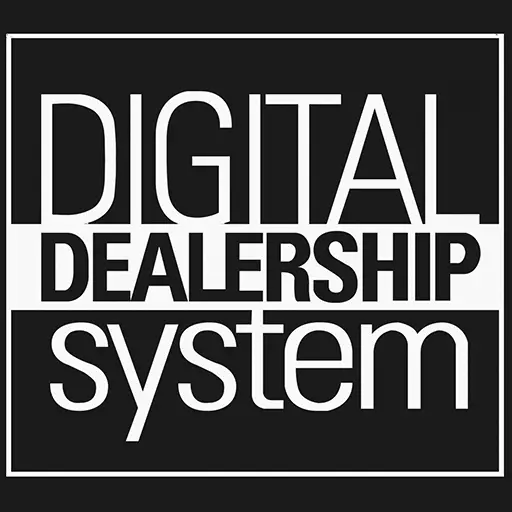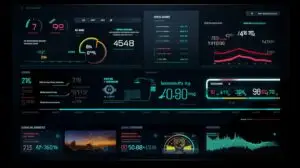Are you struggling to maximize your auto dealership’s business development center (BDC) efficiency? Observations show that a significant number of dealerships are not fully utilizing the BDC, leading to missed sales opportunities.
This article explores key strategies to enhance your BDC’s performance and drive success through effective sales tracking methods. Ready for a transformational journey in auto sales? Read on!
Table of Contents
ToggleKey Takeaways
- Effective BDC management relies on quality interactions rather than quantity, focusing on personalized customer engagement to enhance the dealership experience and increase retention.
- Implementing a robust CRM tool and providing consistent training for BDC representatives can improve lead and call management, leading to higher sales opportunities.
- Integration between the BDC and sales department is crucial for a seamless customer experience, ensuring leads are not missed and important information is shared between teams.
- The BDC plays a vital role in improving the service department by enhancing the customer experience, driving traffic, and collecting valuable information that can be used to tailor marketing tactics.
Understanding the Role of a BDC in Auto Dealerships

In most auto dealerships, the Business Development Center (BDC) plays a crucial role in generating sales leads and setting up appointments. BDC takes charge of customer’s inquiries and potential prospects, extending their tasks beyond creating showroom traffic to develop robust inbound and outbound customer relationships.
Successful operations like pre-owned vehicle acquisitions, service-to-sales transitions, and customer retention efforts often rely on an effective BDC.
Many dealerships are now harnessing the power of the BDC to optimize every stage of the customer’s journey with data. This includes engaging and retaining loyal customers while understanding modern car shoppers’ need for convenience through dealership online and in-person buying experiences.
With the rising trend towards digital retail transformation – it has been found that 60% of customers expect their next vehicle purchase to be completed entirely online – having a responsive BDC that utilizes predictive data for proactive marketing is more critical than ever before.
Key Strategies for Enhancing BDC Efficiency

To maximize BDC efficiency, dealerships should focus on quality over quantity, implement effective lead/call management processes, and integrate the BDC with the sales department.
Quality over Quantity
Effective BDC Management hinges on the core principle of quality over quantity. This strategy not only ensures better results before increasing leads but also fosters personalized customer interaction, enhancing the dealership’s BDC experience.
Instead of volume contacting, which often overwhelms both staff and potential customers, dedicated support is provided to fewer prospects but with higher engagement levels. In effect, dealerships need to focus more on having ten quality conversations a day rather than countless hurried interactions.
Predictive data from platforms like Digital Dealership System becomes instrumental in this approach by providing valuable buyer insights and analytics. These tools aid in proactive marketing by anticipating customer needs accurately and offering tailor-made solutions accordingly.
This can lead to improved relationship building tactics that eventually increase retention and optimize your digital retailing efforts for maximum profitability without trading off the enriching customer journey with data.
Effective Lead/Call Management
One key strategy for boosting the efficiency of a Business Development Center (BDC) in any auto dealership is mastering effective lead and call management.
- Implementing a robust CRM (Customer Relationship Management) tool plays a crucial role. This system should be capable of tracking each interaction between the dealership and its customers effectively.
- BDC representatives need to maintain a focus on quality interactions over quantity, aiming for ten meaningful conversations daily rather than obsessing about contact volume.
- Properly navigating customer inquiries can go a long way in enhancing profitability, particularly when the staff are trained to manage price shoppers deftly.
- Setting clear sales targets for your team helps to keep everyone focused on achieving common goals and stir up healthy competition among members.
- Focusing on personalized customer interactions can maximize the effectiveness of inbound calls and increase prospects of converting potential customers into actual buyers.
- Consistent training to improve phone skills can significantly enhance the quality of communication between your BDC representatives and potential prospects, thereby boosting sales opportunities.
- Keep track of your dealership’s BDC experience with predictive data from tools for better decision-making.
- Effective coordination with other departments is crucial as it helps nurture inbound and outbound relationships in both sales and service businesses.
- Consider outsourcing certain functions or using an external call center if managing large volumes of leads is proving difficult for your in-house team.
- Given that modern dealership customers prefer text messaging, adjusting your lead/call management process to incorporate this preference could be beneficial.
Integration with the Sales Department
Integration between the BDC and sales department is crucial for maximizing efficiency in an auto dealership. By closely aligning these two departments, dealerships can ensure a seamless customer experience and improve overall sales performance.
This integration allows for better coordination of leads, appointments, and follow-ups, ensuring that no potential opportunity slips through the cracks. When the BDC and sales department work together efficiently, they can stay on top of customer inquiries and provide timely responses that foster trust and loyalty.
By sharing data and insights, the BDC can support the sales team with important information about each prospect’s preferences and buying journey. This collaborative approach not only enhances communication within the dealership but also drives greater success in closing deals.
The Impact of BDC on Service Departments

The BDC plays a crucial role in improving the service department by enhancing customer experience, driving traffic, and collecting valuable information. Discover how these strategies can lead to success.
Improving Customer Experience
Improving the customer experience is a crucial aspect of maximizing the efficiency of an auto dealer BDC. With 60% of customers now expecting to complete their next vehicle purchase online, dealerships need to adapt and provide a seamless and enjoyable experience.
The BDC plays a vital role in this by ensuring personalized interactions with potential buyers, offering service schedule reminders, collecting valuable feedback, and building strong relationships.
By prioritizing customer satisfaction and providing exceptional experiences, dealerships can increase loyalty and retention, ultimately driving their success in a competitive market.
Driving Customer Traffic
One key impact of a well-functioning BDC in an auto dealership is its ability to drive customer traffic. By effectively managing leads and inquiries, the BDC can generate interest and attract potential buyers to the dealership.
According to a recent Vehicle Buyer survey, 60% of customers now expect their next vehicle purchase to be completed entirely online. This means that dealerships need to adapt their marketing efforts and provide a convenient digital experience for car shoppers.
The BDC plays a crucial role in this process by engaging with customers, providing personalized interactions, and guiding them toward visiting the dealership or exploring online buying options.
Collecting Valuable Information
Collecting valuable information is a crucial aspect of the BDC’s role in maximizing auto dealership efficiency. By gathering data and insights from customer interactions, the BDC can provide key information to help improve sales strategies and enhance the overall customer experience.
This data can include feedback on customer preferences, buying behaviors, and pain points, which can then be used to tailor marketing tactics and sales approaches. Collecting information about service needs and scheduling allows the BDC to engage with customers and build stronger relationships proactively.
Effectively collecting valuable information, the BDC plays a vital role in driving success for auto dealerships.
Measuring BDC Success

To measure BDC success, tracking metrics like time on the phone, appointments set, and sales performance is essential.
Time on Phone
Measuring the amount of time spent on phone calls is a crucial aspect of tracking BDC success. By analyzing this metric, dealerships can gain valuable insights into their team’s efficiency and productivity.
According to a recent survey, 60% of customers now expect their next vehicle purchase to be completed entirely online, highlighting the importance of optimizing phone interactions with potential buyers.
By monitoring the duration of calls, managers can identify areas where representatives may need additional training or support. Tracking time on the phone allows dealerships to assess how effectively leads are being managed and maximize customer engagement during each interaction.
Appointments
Setting up appointments is a crucial aspect of maximizing the efficiency of an auto dealer BDC. By effectively managing leads and calls, the BDC can ensure that potential customers are connected with sales representatives in a timely manner.
This not only improves customer satisfaction but also increases the likelihood of making a sale. With 60% of customers now expecting their next vehicle purchase to be completed online, it’s important for dealerships to adapt and offer convenient appointment scheduling options that align with modern consumer expectations.
The BDC plays a key role in facilitating these appointments and ensuring a seamless customer experience from start to finish.
Sales Performance Tracking
Sales performance tracking is a crucial aspect of maximizing efficiency in an auto dealer BDC. By closely monitoring sales metrics and key performance indicators (KPIs), dealerships can gain valuable insights into the effectiveness of their sales strategies and identify areas for improvement.
Metrics such as time on the phone, appointments set, and actual sales can provide important data points to evaluate the success of the BDC’s efforts. Sales performance tracking allows dealerships to measure the impact of their customer interactions, identify trends in buyer behavior, and make data-driven decisions to drive success.
With the increasing shift towards digital buying experiences, it becomes even more essential for dealerships to have robust tracking systems in place to adapt to evolving customer preferences and stay competitive in the market.
Benefits of Digital Performance Tracking Systems
Digital performance tracking systems offer several benefits for auto dealerships. These systems provide automatic updates to the dealer management system (DMS), allowing for real-time information on sales and service activities.
They also generate multiple reports that can be used by service technicians, providing valuable insights and improving efficiency. These systems enable storewide aggregate reporting, giving dealership managers a comprehensive view of their overall performance.
Automatic DMS Updates
Automatic DMS (Dealer Management System) updates are a key benefit of digital performance tracking systems for auto dealerships. These updates allow the BDC to stay seamlessly connected with the dealership’s inventory and customer database, ensuring that they have access to real-time information when communicating with prospects and customers.
This means that representatives can provide accurate and up-to-date information on vehicle availability, pricing, and incentives, leading to more effective sales conversations. It also eliminates the need for manual data entry or time-consuming transfers between systems, saving valuable time and reducing errors.
With automatic DMS updates, the BDC can work efficiently and confidently, knowing they have the most current information at their fingertips.
Multiple Reports for Service and Techs
Dealership BDCs can improve their efficiency and success through the use of multiple reports for the service and tech departments. These reports provide valuable insights and data that can help optimize operations and drive better results. Here are some key benefits of utilizing multiple reports:
- Performance Tracking: Multiple reports allow BDCs to track the performance of their service and tech departments more effectively. This includes metrics such as appointment conversion rates, average repair times, customer satisfaction scores, and more. By closely monitoring these metrics, BDCs can identify areas for improvement and take proactive measures to enhance performance.
- Resource Allocation: With access to multiple reports, BDCs can allocate their resources – both manpower and equipment – more efficiently. They can identify trends in service demand, peak hours, or specific services that require additional attention. This enables them to optimize staffing levels and ensure that customers receive prompt and efficient service.
- Targeted Marketing: Multiple reports also enable BDCs to segment their customer base based on various criteria such as demographics, purchasing behavior, or service history. This allows for targeted marketing campaigns that are tailored to specific customer segments, increasing the chances of success.
- Service Recommendations: By analyzing data from multiple reports, BDCs can identify patterns in customer needs and preferences. This helps them make informed recommendations to customers regarding additional services or maintenance requirements that they may not have considered otherwise. By providing personalized recommendations, BDCs can increase upsell opportunities and boost revenue.
- Technician Performance Evaluation: Multiple reports provide insights into individual technician performance as well. BDCs can track key metrics such as average repair time per technician, customer satisfaction ratings for each technician’s work, or repeat repair rates for specific technicians. This data allows BDCs to evaluate individual performance objectively and provide appropriate training or support where needed.
Storewide Aggregate Reporting
Storewide aggregate reporting is a crucial benefit of digital performance tracking systems for auto dealer BDCs. It allows dealerships to gather and analyze data from multiple departments, providing valuable insights into overall performance and areas for improvement. With storewide aggregate reporting, dealerships can:
- Gain a holistic view: By aggregating data from various departments, dealerships can have a comprehensive understanding of their overall performance. This allows them to identify patterns, trends, and areas that need attention.
- Evaluate effectiveness: Storewide aggregate reporting enables dealerships to evaluate the effectiveness of their strategies and initiatives across different departments. They can easily measure the impact of marketing campaigns, sales processes, and customer service efforts on their bottom line.
- Identify opportunities: By analyzing aggregated data, dealerships can identify new opportunities for growth and optimization. They can uncover untapped customer segments, spot emerging market trends, and make data-driven decisions to stay ahead in the competitive automotive industry.
- Streamline operations: Storewide aggregate reporting helps streamline operations by providing a clear overview of all dealership activities. It enables managers to identify bottlenecks in processes, such as lead management or appointment scheduling, and make necessary adjustments to improve efficiency.
- Enhance collaboration: Having access to storewide aggregate reports encourages collaboration among different departments within the dealership. It promotes communication and information sharing between sales, service, and management teams, leading to better coordination and alignment toward common goals.
- Measure ROI: With storewide aggregate reporting, dealerships can accurately measure the return on investment (ROI) of their various initiatives. They can track the effectiveness of marketing campaigns, assess sales performance against targets, and calculate profitability at both departmental and dealership levels.
- Make data-driven decisions: By relying on comprehensive aggregated reports rather than fragmented data from individual departments, dealerships can make more informed decisions based on accurate insights. They can confidently allocate resources, adjust strategies, and implement changes that will drive success.
Conclusion – Auto Dealer BDC Efficiency
Maximizing auto dealer BDC efficiency is crucial for driving success in today’s evolving automotive industry. By implementing strategies such as quality over quantity, effective lead and call management, and integration with the sales department, dealerships can enhance their BDC operations.
Measuring BDC success through metrics like time on the phone, appointments, and sales performance tracking allows dealerships to identify areas for improvement and drive better results.
With the benefits of digital performance tracking systems, dealerships can streamline their processes and stay ahead in a competitive market.
FAQs
1. What is a BDC in the context of auto dealerships?
In the context of auto dealerships, BDC stands for Business Development Center. It is a department within the dealership that focuses on managing and nurturing customer relationships to drive sales and increase customer satisfaction.
2. How can sales performance tracking improve efficiency in an auto dealer’s BDC?
Sales performance tracking allows managers to monitor and analyze key metrics such as lead conversion rates, response times, and appointment show rates. By identifying areas for improvement and implementing targeted training or process changes, efficiency can be increased in the BDC leading to better results.
3. What tools or software can be used for sales performance tracking in an auto dealer’s BDC?
There are various tools and software available specifically designed for sales performance tracking in auto dealerships’ BDCs. These include CRM systems, call tracking solutions, lead management platforms, and analytics dashboards that provide real-time insights into team performance.
4. How does efficient management of leads contribute to overall success in an auto dealership’s BDC?
Efficient management of leads ensures that potential customers receive timely responses, personalized attention, and follow-up communication at each stage of the buying process. This increases the likelihood of converting leads into actual sales, improving customer satisfaction levels, and driving overall success for the dealership.

Alexi Walters is a trailblazing technology journalist known for her insightful coverage of how tech shapes society. With a background in journalism and a passion for innovation, she breaks down complex topics into engaging, accessible stories. Her work focuses on the transformative power of technology in fields like education, healthcare, and environmental sustainability, often highlighting the empowerment of women through tech.
A frequent contributor to leading tech publications, Alexi also advocates for women in STEM and regularly speaks at events to inspire the next generation. Her voice brings a fresh, critical perspective to the world of tech journalism.






